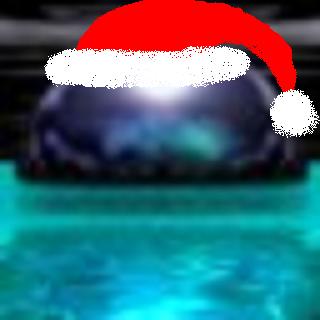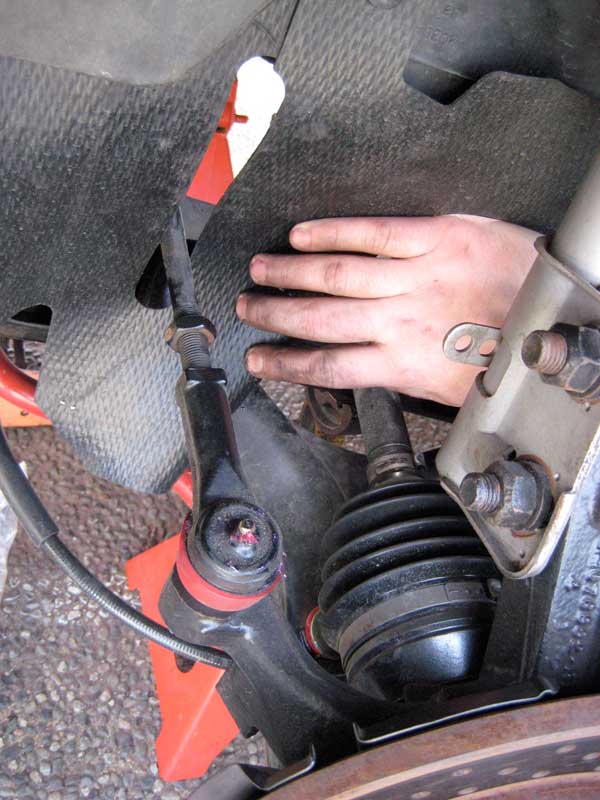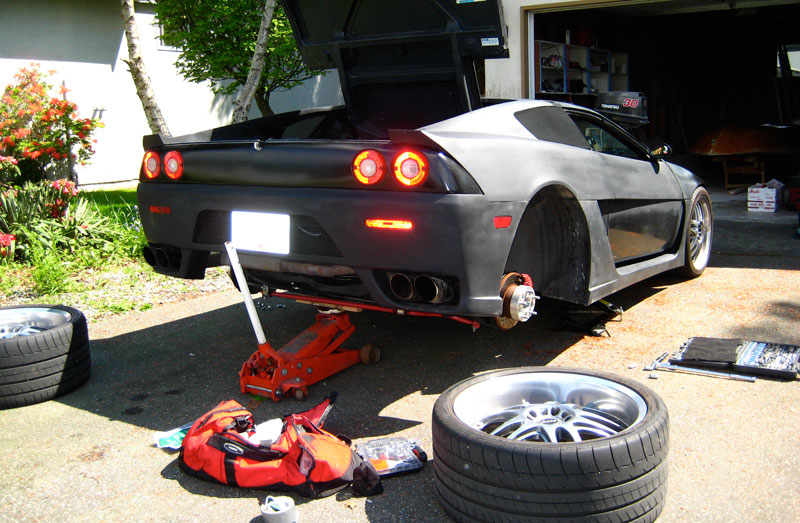
 |
Wheel offsets and spacer plates |
Post Reply 
|
Page 123 4> |
| Author | ||
Patrick 
Newbie 
Joined: 19 April 2008 Location: Vancouver Status: Offline Points: 6 |
 Post Options Post Options
 Quote Quote  Reply Reply
 Topic: Wheel offsets and spacer plates Topic: Wheel offsets and spacer platesPosted: 27 June 2011 at 11:18pm |
|
|
I have heard that using wheel spacers puts extra stress on wheel bearings. Yes, I agree that as a wheel is moved further away from the hub, this increases the leverage and therefore the stresses placed on the bearings. Are we all in agreement on that? Last Saturday while helping with my suspension mods, Tristan was bugging me (in a friendly manner) about the Sunfire rims on my '84, saying that they had too much positive offset. This results in the wheels/tires being tucked into the fender more than the factory Fiero wheels. It's not bad in the front, but I agree it's more noticeable in the back. I said I wanted to use a spacer to move the rear wheels back out towards the edge of the rear fender, and Tristan mentioned about this being bad for the bearings etc. But is it? Tristan and I debated the issue and got nowhere. I felt it was too difficult to visualize and discuss without a diagram. So here it is. The point I was trying to make with Tristan, and he couldn't see it, was that if you move a positive offset wheel out with a spacer, it's no different than using a wheel which has a more negative offset as long as the end result is the same. By "end result", I'm referring to where the wheel/tire is in relation to the fender, or in relation to the pivot point of the lower control arm. Looking at the diagram below (which I know is not drawn "correctly"), if the wheel on the left is a stock Fiero rim, and the wheel on the right is a Sunfire rim (with more positive offset) being used with a spacer, can anybody tell me that this is going to make ANY difference in regards to what stresses the wheel bearings will experience? I say in this situation the stresses on the bearings are exactly the same as each wheel/tire ends up in the same location relative to the car/suspension. Comments?
|
||
 |
||
Colby 
Admin Group 
Joined: 30 March 2009 Location: Abbotsford/Sask Status: Offline Points: 666 |
 Post Options Post Options
 Quote Quote  Reply Reply
 Posted: 27 June 2011 at 11:40pm Posted: 27 June 2011 at 11:40pm |
|
As far as I can tell, yes it would. The left hand wheel has it's centre of mass closer to the pivot point. Torque = R x F where R is the distance from the pivot to centre of mass of the wheel and F is the mass * 9.8. The greater R of the right hand side wheel means more torque applied to the bearings. |
||
|
88 Formula 5 speed
|
||
 |
||
Romeo 
Senior Post God 

Joined: 16 November 2008 Location: Canada Status: Offline Points: 3033 |
 Post Options Post Options
 Quote Quote  Reply Reply
 Posted: 27 June 2011 at 11:52pm Posted: 27 June 2011 at 11:52pm |
|
|
As Colby mentioned, the mass is essentially being held "further out" from the hub. The weight is worth more force (Consider ten pounds of thrust held six inches away from the head of a ratchet versus ten pounds held a foot away; The second will transfer more force) |
||
|
Never shift into reverse without a back-up plan.
|
||
 |
||
Patrick 
Newbie 
Joined: 19 April 2008 Location: Vancouver Status: Offline Points: 6 |
 Post Options Post Options
 Quote Quote  Reply Reply
 Posted: 28 June 2011 at 12:09am Posted: 28 June 2011 at 12:09am |
|
|
Tristan, you posted while I was typing out my response to Colby. What you've stated ties in exactly to what I was about to post... Colby, it's been a lot of years since my high school physics classes, so I'm at somewhat of a disadvantage here! I have to admit I don't know about the need to take into consideration the "center of mass". I thought it would be more along the lines of how a lever works. The longer the lever, the more force applied. In this case, the lever would be the tire on the ground and the lower control arm working against the coil spring. The force being applied to the lever is the weight of the car pushing against the road. The end of the lever is the outer edge of the tire. In both examples I've pictured above, the "end of the lever" is the same distance from where the lower control arm pivots. With that in mind, the forces working against the wheel bearings would be the same IMO. Colby, you very well may be right, but I'm still not willing to conceed until I come across something "official".
|
||
 |
||
Romeo 
Senior Post God 

Joined: 16 November 2008 Location: Canada Status: Offline Points: 3033 |
 Post Options Post Options
 Quote Quote  Reply Reply
 Posted: 28 June 2011 at 12:36am Posted: 28 June 2011 at 12:36am |
|
|
But the tire is not where the weight is being applied to the bearing - the inner face of the rim is. As for picturing it as a simple lever - that's fine. But how you're picturing it is going about it wrong. The part of the rim where the lug nuts actually press down on, that's where the torque is applied to the bearing. By moving it out, you are increasing the net torque by means of increased leverage.
|
||
|
Never shift into reverse without a back-up plan.
|
||
 |
||
Colby 
Admin Group 
Joined: 30 March 2009 Location: Abbotsford/Sask Status: Offline Points: 666 |
 Post Options Post Options
 Quote Quote  Reply Reply
 Posted: 28 June 2011 at 12:39am Posted: 28 June 2011 at 12:39am |
|
Actually, what I'm describing is exactly how levers work. In this case it's rotational force being applied (torque).
For the sake of clarity, I was focusing on simply the torque applied to the bearing from the wheel. There are two important "levers" here, one from the tire to the bearing and one from the ball joint on the control arm to where the control arm bolts to the cradle. Since we are concerned with the stresses on the bearing, it's pretty safe to ignore the second lever. |
||
|
88 Formula 5 speed
|
||
 |
||
Colby 
Admin Group 
Joined: 30 March 2009 Location: Abbotsford/Sask Status: Offline Points: 666 |
 Post Options Post Options
 Quote Quote  Reply Reply
 Posted: 28 June 2011 at 1:14am Posted: 28 June 2011 at 1:14am |
|
|
Pat, I think the question you should be asking is not whether there actually is additional stress but rather, something like: "should I be concerned about additional stress leading to premature failure of the bearings?".
I think so long as the wheels aren't overly heavy you would probably be fine. Although I have no experience with them, I'd probably be seeing more results about failed bearings in the Google searches I've done tonight if it was a common problem. |
||
|
88 Formula 5 speed
|
||
 |
||
Patrick 
Newbie 
Joined: 19 April 2008 Location: Vancouver Status: Offline Points: 6 |
 Post Options Post Options
 Quote Quote  Reply Reply
 Posted: 28 June 2011 at 1:20am Posted: 28 June 2011 at 1:20am |
|
|
Hmmm... it's possible what I'm not understanding then (and taking into consideration) is the rotational torque. All I've focused on is the weight of the car on the bearings. I wasn't even thinking of power being applied to the wheels through these same bearings, and of course the wheels spinning. Okay, I'll have to ponder this now. Thanks guys.
|
||
 |
||
Patrick 
Newbie 
Joined: 19 April 2008 Location: Vancouver Status: Offline Points: 6 |
 Post Options Post Options
 Quote Quote  Reply Reply
 Posted: 28 June 2011 at 1:26am Posted: 28 June 2011 at 1:26am |
|
|
Yeah, when you consider the huge wheels and tires that Johnny has on his car, and his SC3800... and he has something like two inch spacers installed!
|
||
 |
||
Colby 
Admin Group 
Joined: 30 March 2009 Location: Abbotsford/Sask Status: Offline Points: 666 |
 Post Options Post Options
 Quote Quote  Reply Reply
 Posted: 28 June 2011 at 1:31am Posted: 28 June 2011 at 1:31am |
|
Actually I was ignoring the rotation of the wheel and I'd prefer not to
get into it. The torque (rotational torque is redundant as all torque is
rotational) I'm referring to is what causes the slight deflection in the first lever I
described and it's caused by the weight of the wheel and it's location on the hub. |
||
|
88 Formula 5 speed
|
||
 |
||
Patrick 
Newbie 
Joined: 19 April 2008 Location: Vancouver Status: Offline Points: 6 |
 Post Options Post Options
 Quote Quote  Reply Reply
 Posted: 28 June 2011 at 2:12am Posted: 28 June 2011 at 2:12am |
|
|
Give me a break. It's late and I'm old.
|
||
 |
||
Dawg 
Senior Member 
Joined: 15 August 2009 Location: Canada Status: Offline Points: 988 |
 Post Options Post Options
 Quote Quote  Reply Reply
 Posted: 28 June 2011 at 3:09am Posted: 28 June 2011 at 3:09am |
|
|
I think Tristan explained it more plainly and he is right. This lever we are the most concerned about starts where the wheel meets the hub and ends on the inner most side of the bearing.
Try to imagine this bearing right inside the center of the wheel. In that case, the weight of the car is pushing straight down on the bearing. This would be ideal. Every inch away from this ideal gives mechanical advantage to the car. Not good. Add to that braking and accelorating (sp?) forces which are many times more severe than the others and you are asking for trouble. For the record, poor Johny has had plenty of problems due to his spacers and wide rubber. I would venture to say that if he drove his car like I like to drive. it wouldn't last a month, never mind autocross. My advice, don't do it. The Dawg |
||
|
You dream it up....I'll make it
|
||
 |
||
Car-2-Lo 
Senior Post God 

Joined: 14 February 2007 Location: Canada Status: Offline Points: 1266 |
 Post Options Post Options
 Quote Quote  Reply Reply
 Posted: 28 June 2011 at 7:46am Posted: 28 June 2011 at 7:46am |
|
|
For the RECORD, I had no problem with the 1-1/4" wheel adapters on the rear,
some asshole didn't check for LOOSE NUTS HERE |
||
|
Johnny-B-Good

|
||
 |
||
Colby 
Admin Group 
Joined: 30 March 2009 Location: Abbotsford/Sask Status: Offline Points: 666 |
 Post Options Post Options
 Quote Quote  Reply Reply
 Posted: 28 June 2011 at 8:08am Posted: 28 June 2011 at 8:08am |
|
I agree that the stresses occur during braking and accelerating, as well as whenever the suspension travels. The thing I don't like about the explaination where you're only concerned with where the start of the rim mounts to the hub and it's distance from the bearing is this: For the sake of argument, what happens if you were to weld the spacers on to the wheel? Does this now mean that the wheel is now mounted directly against the hub? If the spacer is now apart of the rim, then the rim is now mounted right up to the hub and by your explaination (assuming I am understanding correctly) the negative effects should now be mitigated. That seems doubtful to me, and taking into consideration the location of the centre of mass of the wheel gets around this nicely. |
||
|
88 Formula 5 speed
|
||
 |
||
Dawg 
Senior Member 
Joined: 15 August 2009 Location: Canada Status: Offline Points: 988 |
 Post Options Post Options
 Quote Quote  Reply Reply
 Posted: 28 June 2011 at 9:38am Posted: 28 June 2011 at 9:38am |
|
|
You make a valid distinction here. I was assuming that the spacer was part of the hub, since it is bolted to the hub not the wheel. So assuming this, my explanation would still work no?
I'm not so sure about the center of mass negating the leverage however. This in a sense is what Patrick is suggesting. He is wondering if having the center of mass right over the bearing would counteract the effects of the spacer. I think not. Ignoring cornering effects, the same amount of vehicle weight is present. Would you agree? The Dawg
|
||
|
You dream it up....I'll make it
|
||
 |
||
Dawg 
Senior Member 
Joined: 15 August 2009 Location: Canada Status: Offline Points: 988 |
 Post Options Post Options
 Quote Quote  Reply Reply
 Posted: 28 June 2011 at 9:49am Posted: 28 June 2011 at 9:49am |
|
|
To be honest Johny, most of the issues I've read about have been regarding the front suspension not the back.
The theory is the same however. I personally think that your cool setup is hard on your bearings and suspension parts and contributed to your worn out parts. This simply means you have to be aware of it and be extra attentive to maintenance. No different than any other performance car I suppose. All I'm trying to say is no spacer would be better is all. How much better? I'm not sure. The Dawg |
||
|
You dream it up....I'll make it
|
||
 |
||
Car-2-Lo 
Senior Post God 

Joined: 14 February 2007 Location: Canada Status: Offline Points: 1266 |
 Post Options Post Options
 Quote Quote  Reply Reply
 Posted: 28 June 2011 at 10:20am Posted: 28 June 2011 at 10:20am |
|
|
GET YOUR STORY STRAIGHT guys.. about poor Johnny and yes I agree about more stress on bearings ! For the RECORD, I had no problem with rear wheel bearings using 1-1/4" wheel adapters on the rear, some asshole didn't check for LOOSE NUTS HERE I had no problems with wheel bearings, just ALIGNMENT SHOPS (LOOSE NUTS) ! I only got Capt to change BEARINGS because they where 25years old, but look what he found (from DALES ALIGNMENT) LOOSE NUT !!!!! 
Found one bad (cheap) bearing right out of the box and replaced it with my old bearing and I'm still driving with it and one cheap bearing. Since then I got two new costly bearings that I'll be installing next week when doing the bump steer suspension and keep the old ones for spares. Hugh has spacers front and back with turbo V8 power, will see how that works out ? 
|
||
|
Johnny-B-Good

|
||
 |
||
Car-2-Lo 
Senior Post God 

Joined: 14 February 2007 Location: Canada Status: Offline Points: 1266 |
 Post Options Post Options
 Quote Quote  Reply Reply
 Posted: 28 June 2011 at 10:44am Posted: 28 June 2011 at 10:44am |
|
I agree with you all about more stress on bearings, but actually I never had that problem yet 

As you can see me being paranoid, checking all nuts and bolts and yes the new bump steer suspension will be high maintenance, but that's okay, that's my hobby. |
||
|
Johnny-B-Good

|
||
 |
||
Romeo 
Senior Post God 

Joined: 16 November 2008 Location: Canada Status: Offline Points: 3033 |
 Post Options Post Options
 Quote Quote  Reply Reply
 Posted: 28 June 2011 at 11:21am Posted: 28 June 2011 at 11:21am |
|
|
There are three things to consider with regards to spacers: Spacer size (Mechanical advantage), tire and rim weight (Mechanical force) and driving style/road condition (Additional shock force). Johnny Boy might be able to get away with large rims and spacers because he is a sane driver. During autocross conditions, where we have the rough road and hard braking and acceleration, those forces will now really compound the existing stress.
As for your thought-question about welding the spacers, I can't imagine why it would help. The weight is still being held away from the hub; That torque still maintains a mechanical advantage. |
||
|
Never shift into reverse without a back-up plan.
|
||
 |
||
Car-2-Lo 
Senior Post God 

Joined: 14 February 2007 Location: Canada Status: Offline Points: 1266 |
 Post Options Post Options
 Quote Quote  Reply Reply
 Posted: 28 June 2011 at 11:27am Posted: 28 June 2011 at 11:27am |
|
Well Dawg, that's why you're NOT driving Michele's old 2M6 anymore, IT DIDN'T LAST AT ALL, never mind autocross 
So you see for THE RECORD, I had no problems at all due to spacers, it was all DUE to asshole ALIGNMENT SHOPS not doing there job 
|
||
|
Johnny-B-Good

|
||
 |
||
Post Reply 
|
Page 123 4> |
| Tweet |
| Forum Jump | Forum Permissions  You cannot post new topics in this forum You cannot reply to topics in this forum You cannot delete your posts in this forum You cannot edit your posts in this forum You cannot create polls in this forum You cannot vote in polls in this forum |